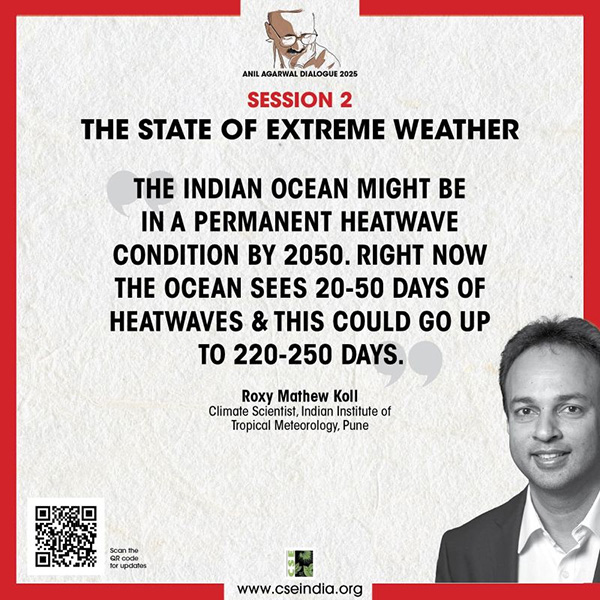
A CSE campaign on thermal comfort
How to beat the heat affordably. In homes, buildings and cities.
Extreme heat is no longer just an environmental challenge-it’s a public health and livelihood crisis. With worsening climate conditions, 30 per cent of the global population already faces dangerously high temperatures for at least 20 days a year, and this is only set to grow. In 2024, New Delhi endured an alarming 39 consecutive days of extreme heat, underscoring the growing threat of heatwaves across India. Over the past two decades, India has seen a 62 per cent increase in heatwave-related deaths due to a 138 per cent rise in the frequency of heatwaves. By mid-2024, Delhi alone had recorded 270 heat-related fatalities.
The crisis extends beyond health. As more people turn to air-conditioning and cooling appliances, global energy demand has surged-rising by over two-thirds since 2010. This surge has contributed to a 0.5 per cent increase in emissions from appliances in just one year. And yet, the solutions we rely on to beat the heat are driving emissions that further worsen the problem.
In India’s housing sector, the issue is even more pronounced. Over 70 per cent of homes are self-built, with little to no guidance on achieving thermal comfort. While people are actively seeking ways to stay cool, they lack access to the knowledge and tools needed to make informed, sustainable, and affordable choices. Without action, 30 per cent of the global poor are projected to live outside the bounds of adaptive thermal comfort by 2070.
What We Aim to Do
The Centre for Science and Environment’s (CSE) campaign, Cool It!, focuses on practical solutions to address these challenges. With the theme “How to beat the heat affordably: In homes, buildings, and cities,” this campaign seeks to make thermal comfort a priority and provide actionable strategies for adaptation.
Our Approach
Building Awareness: Organising webinars, publishing blogs, hosting conversations with industry experts, and conducting opinion polls highlighting key issues and solutions.
Creating a Community: Developing a platform where individuals can share and learn sustainable practices for heat mitigation.
Providing Practical Tools: Offering resources like illustrative guidebooks tailored to building complexes to help retrofit existing spaces using passive design principles.
Empowering Citizens: Introducing tools to assess rooftop solar potential, identify urban heat centers, and reduce energy costs in city hotspots.
This campaign aims to make staying cool an accessible and informed choice for everyone. Our work so far can be found here on this webpage.
For Any Questions or Further Details, Get in Touch with
Gargi Dwivedi
Senior Research Associate
Sustainable Habitat and Building Program, CSE
8840349824
gargi.dwivedi@cseindia.org
Sukanya Nair
Programme Manager
Multimedia Team, CSE
8816818864
sukanya.nair@cseindia.org
Outreach Programs with National and International Educational Institutions

Regional release of “Planning and Designing Habitat in Climate-Risked Times: Heat Toolkit"

Regional Hands-on Workshop on "Climate-Resilient Cities: Adaptive and Mitigative Approaches for a Warming Habitat"
READ MORE

CSE research presentation on Traditional and Low Embodied Carbon, Fusion Construction Technologies
READ MORE

Training for govt. construction company on Sustainable design techniques, not-in-kind cooling, energy efficiency
READ MORE






































